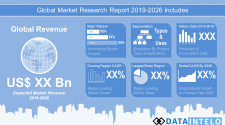Many consumers may have heard of blockchain technology, especially in relation to cryptocurrency. However, they may not be aware of its full potential and impact across industries. Blockchain has the potential to simplify and add greater security to data management, and since its inception, this technology has quietly been changing business processes.
To get further insights, we asked the members of Forbes Technology Council to share some ways blockchain has changed (or will soon change) business. Their best answers are below.
1. Statistic Transparency
With all the streaming options available today, artists struggle to make a living off their royalties, mainly because streaming platforms aren’t transparent when it comes to play statistics. The blockchain will simplify rights management for music artists because it will provide a single source of truth for their art. It will be easier to establish ownership, count plays and pay artists what they’re due. – Thomas Griffin, OptinMonster
2. Data Collaboration And Control
There’s a natural tension between collaboration and data control. Blockchain bridges the two. Enterprises must not only work together to succeed but also keep data on premises in an immutable and auditable form. By using blockchain as a system of record—like a collaborative SQL database—companies can do business without having to trust partners or third parties not to corrupt mission-critical data. – Chris Turlica, MaintainX Inc.
3. Decentralized Finance
Decentralized finance refers to an ecosystem of financial applications built on top of blockchain networks. These apps are growing quickly, shifting the custody of assets from banks to software. While having the potential to enhance economic activity worldwide, DeFi apps can be vulnerable to hacks. Good security both before and after deployment is crucial for growth and mainstream adoption. – Richard Ma, Quantstamp
4. Supply Chain Management
Blockchain and the supply chain go together like peanut butter and chocolate and not just because they rhyme. Blockchain provides accurate, authenticated and transparent transactions with predictable, pre-approved fees and full auditability. Removing intermediaries lowers costs. Distributing the ledger increases reliability. And because transactions are immutable and irrevocable, fraud is reduced. – Chris Grundemann, Myriad360
5. Finance And Banking
The big disruptive feature of blockchain is the immutable transparency that it provides. Money and banking are opaque, with obfuscations everywhere in the system. This will all be disrupted with the transparency that blockchains provide. – Charles Silver, Permission.io
6. Data Privacy
Blockchain is transforming the way that businesses handle customer data, moving us toward a fully decentralized model where every consumer is in control of their own identity and data. Until blockchain is fully adopted, however, businesses are already taking steps to improve data privacy, such as obtaining user permission for data collection and consent management. – Sanjoy Malik, Urjanet
7. Data Connection
Blockchain will impact how businesses manage data. Companies will need to recognize that their data is transparent to all parties that participate in the blockchain. This will allow chain participants to potentially see all costs, transactions and inventory between competitors, suppliers and customers, allowing for a more fair and competitive market without regulatory and middleman cost. – Wesley Crook, FP Complete
8. Cross-Industry Data Consolidation
Connecting data storage and data users from multiple domains, blockchain can consolidate large amounts of data. This lets different businesses cooperate with each other more effectively. Manufacturers and shipping companies often use different or even incompatible systems. Using a single blockchain network, they can overcome discrepancies and create a unified, fully transparent and safe data flow. – Dennis Turpitka, Apriorit
9. User Authentication
Using blockchain, or a distributed ledger, for user authentication in digital channels will be a game-changer for businesses. The combination of a trusted, tamper-proof distributed ledger along with verified credentials will enable people to have trusted, portable digital identities that they can use on any website, from their bank to their healthcare provider. – Will LaSala, OneSpan
10. Human Resources
Businesses find it difficult to find and retain talent, even with the internet. They also need to manually verify candidates’ credentials and references. Blockchain removes inefficiencies associated with hiring and paying employees. Candidates can securely update information as HR verifies credentials. It thus benefits both parties. Employees can receive paychecks faster and in a safer manner. – Arnie Gordon, Arlyn Scales
11. Replacing Passwords
Passwords have long been the de facto standard for governing access to software as a service applications, but that soon may change. In the next several years, we’ll see blockchain technology making passwords obsolete for managing credentials, consents and preferences in use cases such as self-sovereign identity. – Danny Kibel, Idaptive
12. E-commerce
E-commerce is primed to be changed dramatically by blockchain. E-commerce has the benefit of taking place primarily in the same medium as blockchain and currently has multiple manners for accepting payment. Many e-commerce businesses have already implemented blockchain; many mainstream global businesses have not yet implemented it but are considering it. – Alexandro Pando, Xyrupt Technologies
13. Electronic Health Records
The transition of electronic health records to the blockchain will revolutionize data ownership and security for medicine. This will create greater immutability across data repositories, allowing for greater integration and the opportunity to leverage cross-boundary data sharing to train advanced AI algorithms—something that cannot be done today. – José Morey, Liberty BioSecurity


















